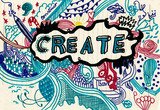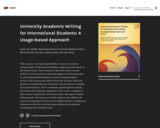
Creating Open Educational Resources
- Subject:
- Open Educational Resources & Practice
- Material Type:
- Lesson
- Author:
- Judith Sebesta
- Carrie Gits
- Date Added:
- 08/21/2023

Creating Open Educational Resources

Sharing Your Work

This report presents the findings of a research study, funded by the Texas Higher Education Coordinating Board (THECB) and conducted by the Institute for the Study of Knowledge Management in Education (ISKME), aiming to identify the characteristics, challenges, and needed supports of institutions with low engagement with Open Educational Resources (OER); explore which higher education regions in Texas need additional support with OER; and investigate factors that promote and hinder OER advancement in institutions that are relatively early in on their journey with OER. Utilizing the 2019 and 2021 OER Landscape Survey data and drawing from interviews with nine administrators across five higher education institutions, the report concludes with recommendations for advancing OER in Texas and beyond.

This resource provides a brief introduction to the theory-in-practice map, a tool used in design and continuous improvement that serves as a framework, outlining the steps involved in implementing an intervention and maps out potential client/user responses at each stage.

In this session, participants had the opportunity to learn from the experiences of first-time and expert level faculty and student teams who implemented methods of open pedagogy. The robust conversation provides insight into the lived experiences of those actively engaged in OER.

A 30-page toolkit with 16 distinct teaching methods that promote open pedagogy explained. The beginning of the toolkit explains open pedagogy and its relationship to OER. There is a section at the end with additional resources and next steps if faculty want to implement some of these methods.
There are multiple weblinks and examples embedded in the document so that faculty who are interested in a particular method can use those resources for more information and to see examples of how to implement open pedagogy.

UNTIL VERY RECENTLY, AUTHORS WHO wanted their works to be widely available had little
choice but to submit their works to publishers who took assignments of the authors’ copyrights and exercised them according to a proprietary “all rights reserved” model. The advent of global digital networks now provides authors who write to be read with exciting new options for communicating their ideas broadly. One of these options is open access.

Unbound publishes work that explores the interstices of digital scholarship, broadly conceived, with an emphasis on digital cultural studies; critical digital humanities; libraries, archives, and museums; the interpretive social sciences; and socially engaged computational or quantitative methods.

Dr Javiera Atenas (Suffolk), Leo Havemann (Open), Dr Caroline Kuhn (Bath Spa) and Dr Cristian Timmerman (Ulm) ran the #datapraxis project Understanding Critical Data Literacy beyond Data Skills workshop for GO-GN on Thursday 4 November 2021.

With much of the world gone digital, learning to create documents that are accessible to everyone is becoming a necessary skill. Intended for a general audience, this free resource reviews a wide range of document authoring applications, including the tools they contain for creating accessible documents, and tests them to ensure they do not contain potential barriers. Learn how to create accessible word processed documents, spreadsheets, presentation slides, and PDF documents, among others, so they are accessible to everyone.

This resource is for designing a Professional Learning Series. This resource was designed for the OER Advanced Skills series in June 2023.

Short Description:
This resource is designed specifically to meet the academic writing needs of international students studying at universities in the United States. The materials in the book can be covered within a 14-week semester, but each chapter or section may also be used independently.Based on a series of needs analysis projects, this resource provides an overview of major rhetorical patterns of writing that are commonly used in university settings in the United States. These commonly required genres include descriptive and evaluative summaries, short essays, comparison and contrast assignments, literature reviews, descriptive reports, and proposals. The resource includes chapters that address the structure and purpose of these more common genres, including an awareness of the ways that the target audience and situation should shape the writing of each.
Long Description:
This resource is designed specifically to meet the academic writing needs of international students studying at universities in the United States. The materials in the book can be covered within a 14-week semester, but each chapter or section may also be used independently.
Based on a series of needs analysis projects, this resource provides an overview of major rhetorical patterns of writing that are commonly used in university settings in the United States. These commonly required genres include descriptive and evaluative summaries, short essays, comparison and contrast assignments, literature reviews, descriptive reports, and proposals. The resource includes chapters that address the structure and purpose of these more common genres, including an awareness of the ways that the target audience and situation should shape the writing of each.
A second important focus of the textbook is teaching students how to make effective use of sources within established academic integrity standards. The third focus of the book is on key grammatical forms and constructions that are important in each of the types of writing the students will practice. By treating grammar integratively in context, we hope to address more effectively the aspects that cause difficulties in academic writing.
Word Count: 42280
(Note: This resource's metadata has been created automatically by reformatting and/or combining the information that the author initially provided as part of a bulk import process.)

This resource provides a brief introduction to user journey maps, a tool used in design and continuous improvement that visually represents the steps, interactions, and experiences that an individual goes through when engaging with a specific service or intervention. Its purpose is to help implementers empathize with their user's experiences and pain points.

This resource provides a brief introduction to user personas, a tool used in design and continuous improvement that involves creating fictional representations (based on real user research) of different types of users that help to understand their needs, behaviors, and motivations.

This guide provides resources on the topic of Using Digital Resources, as a supplement to the OERTX Digital Information Literacy Hub.

As so often is the case, the idea for this book came from a twisting path. Not long after we began collaborating and presenting together at conferences, we were invited to draft a chapter on critical race theory (CRT) in academic libraries. An invited chapter is, of course, very flattering, so we proceeded without much thought to who the publisher would be. Angela had been working on social justice issues for a while at that point, while CJ had a wealth of expertise on open educational resources (OER). We merged our two areas of expertise in drafting that chapter, discussing OER as an opportunity to not only save students money but incorporate CRT into the curriculum—both in content and in practice.

Presentation by Bridget Conneely made as part of the "Bringing Research Data to the Ecology Classroom: Opportunities, Barriers, and Next Steps” Session at the Ecological Society of American annual meeting, August 8th, 2017 Portland Oregon

An important element of open educational resources, specifically open textbooks in the B.C. Open Textbook Collection, is that they are openly licensed, but what does that mean?
Open licences enable collaboration, development, access, and inspiration from your creative works without requiring you to give up the rights (copyright) automatically granted to you for your creation.
An open licence lets you retain ownership of your work, while allowing others to use, share, and remix it, without requesting your permission. For most open licences, all that is required of the users is to attribute you for your work.

Wiki Education envisions a world in which students, scholars, scientists, archivists, librarians, and other members of academic and cultural institutions are actively engaged in sharing their knowledge with the general public through Wikipedia, Wikidata, and other open collaboration projects on the web.

Accessibility is one of the most important values underlying all of the work that we do. Now, you might already have some experience with accessibility, but other people that you work with might be new to the topic, or need methods or tools to see how to improve the accessibility of a product or service.
This page is an introduction to why accessibility matters, and we hope that you share it with your team.